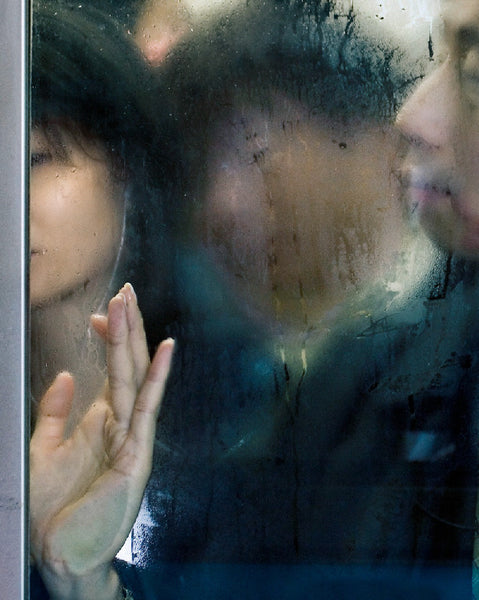
Steven Nederveen presenting “Ocean’s Crossing” at the Canadian Consulate in Reykjavik 1)
It’s been a busy year for you so far. You recently had the honour of receiving a highly- regarded commission by the Canadian Ambassador for the Canadian Embassy in Reykjavik for Canada’s 150th Anniversary. How was your experience in Iceland?
It was wonderful! The people are very warm and welcoming. The presentations went well and the audience was very keen on my latest work, the abstracts and the sculptures. I had a couple days to travel around and take in their unique landscapes. That was very inspiring. I highly recommend Iceland as a place to visit.

2) One can’t help but observe your careful treatment of the elusive properties of cool, arctic light in your upcoming solo show, Nature Transforms. What is it about light that intrigues you?
I've always been intrigued with the play of light on moving water or its refraction through objects. It has a strange hypnotic quality that enlivens my sense of wonder. Sometimes it puts me into a state of meditation that connects me to my soul, and that is usually followed by a deep sense of connection to the world around me.

3) Emotional memory of place is a theme that you explore and delve deeply in throughout past and present bodies of work. How is this new series informed by your recent trip to Iceland? What was it about Iceland that inspired you to experiment with new materials?
Iceland is a place of stark contrasts with its volcanic underbelly and glacier peaks, and soaring cliffs against black sand beaches. It's a memorable place with lots of distinct experiences but I focused mostly on the glaciers. Seeing giant slabs of ice drifting towards open ocean is really beautiful but also deeply worrying. With icebergs you're seeing ice that's been frozen for eons, marked with sediment deposits from years gone by. They led me to meditate on the expansiveness of nature and time, giving me a sense of awe and wonder. Seeing these singular white monoliths against the dark blue water inspired me to explore the theme of water and ice - it's transformative nature, our impact on it, and also the hypnotic beauty of ice with its transparent depths and sparkling refractions of light.
In my abstracts, I use an ice-like sheet of acrylic with fractures and clear pockets, to conceal and reveal, manmade markings (ink brushwork). The varying colours reflect the Nordic skies at various times of day or night.


Detailed shots of Iceberg 1
The sculpture is a result of testing the boundaries of multiple layers of transparency. Through 24 painted sheets of acrylic, a fully 3 dimensional object is created. A stylized iceberg floats in a sea of colour. As the viewer walks around the piece, the iceberg changes from a unified image to a series of disjointed layers and back again to a unified image on the other side.
Also, Olafur Eliason is one of my favourite artists, he's Danish/Icelandic, and a bunch of his work is in Reykjavik. Seeing it first hand was incredibly inspiring and has single-handedly encouraged me to explore new methods and concepts in my work.

4) How would you say your work has developed in the past few years and how do you see it evolving in the future?
I've spent a lot of time depicting contemplative landscapes and trying to evoke a sense of wonder from nature. They are informed by my own experiences. I love this exploration and how it's developed so far.
I plan to continue on this path while incorporating the viewer into the work more directly. I can see how the sculptural pieces can lend themselves to large-scale site-specific works, possibly incorporated into architectural interiors. In my new multi-layered abstract pieces, viewers may be reflected in, or revealed and concealed by the various layers as they move around the piece. I hope that my work re-awakens in the viewer a similar experience that perhaps they've had in the past.






























